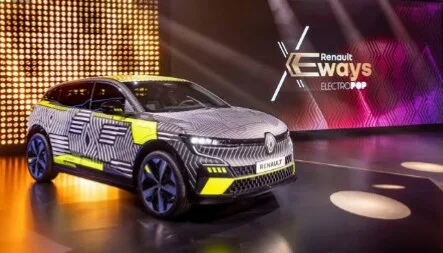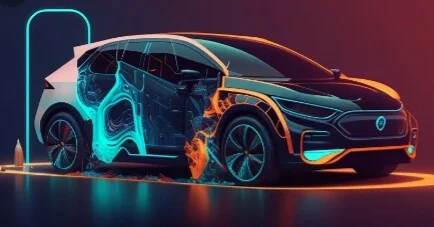Introduction Increased Range Revolutionizes Electric Vehicles
Electric vehicles (EVs) have emerged as a key solution to combat climate change and reduce dependence on fossil fuels in the transportation sector.
EV technology continues to evolve, one significant advancement that is revolutionizing the industry is the increased range of electric vehicles.
The limited range of early EV models often deterred potential buyers concerned about "range anxiety." However, with advancements in battery technology and infrastructure development, modern EVs now offer impressive driving ranges that rival those of conventional gasoline-powered vehicles. In this article, we will explore how the increased range of electric vehicles is transforming the perception and adoption of sustainable transportation.
Increased Range Revolutionizes Electric Vehicles
| Feature | Increased Range | Limited Range |
|---|---|---|
| Driving Freedom | Provides drivers with greater flexibility and confidence to travel longer distances without range anxiety. | Restricts driving distances and requires careful planning of charging stops. |
| Adoption | Encourages wider adoption of electric vehicles as more people feel comfortable using them for daily commutes and longer trips. | Limits the appeal of electric vehicles for many consumers who prioritize long-distance travel. |
| Infrastructure | Drives the need for a more extensive and reliable charging infrastructure to support longer journeys. | Can be less reliant on a robust charging network, but still requires sufficient charging options. |
| Battery Technology | Advances in battery technology, such as solid-state batteries, play a crucial role in achieving increased range. | Limited by current battery technology and its energy density constraints. |
| Cost | May lead to higher upfront costs for electric vehicles with increased range, but can be offset by long-term savings on fuel and maintenance. | Can be more affordable but may compromise driving convenience and flexibility. |
| User Experience | Improves the overall user experience by eliminating range anxiety and providing a more seamless driving experience. | Can be frustrating for drivers who frequently encounter range limitations. |
Outlook Increased Range Revolutionizes
1. Technological Advancements:
One of the primary drivers behind the increased range of electric vehicles is rapid advancements in battery technology. Lithium-ion batteries, which power most modern EVs, have witnessed substantial improvements in energy density, enabling vehicles to travel longer distances on a single charge. The development of solid-state batteries and other next-generation battery technologies holds even greater promise for further extending the range of EVs in the near future.
2. Longer Distance Travel:
The increased range of electric vehicles has significantly expanded their practicality for longer distance travel. EVs are no longer limited to short urban commutes but can now embark on road trips and cover substantial distances without the need for frequent recharging. This newfound freedom is transforming the perception of EVs as viable alternatives to conventional vehicles for all types of travel, bolstering their appeal to a wider range of consumers.
3. Range Confidence and Mitigating "Range Anxiety":
The extended range of modern EVs provides drivers with increased range confidence and helps mitigate the phenomenon known as "range anxiety." Range anxiety refers to the fear of running out of battery power before reaching a charging station, which has been a deterrent for some prospective EV buyers.
As EV ranges expand, drivers can confidently plan trips without constant concerns about recharging, promoting greater adoption of electric vehicles.
4. Charging Infrastructure Development:
The increased range of EVs has prompted significant investments in charging infrastructure development. Charging stations are becoming more prevalent, with rapid-charging options available along major highways and in urban centers.
This expansion of charging infrastructure supports longer trips, enabling EV owners to recharge conveniently during their journeys. As charging networks grow, the accessibility and convenience of charging will continue to improve, further enhancing the appeal of electric vehicles.
5. Environmental Benefits:
The increased range of electric vehicles amplifies the environmental benefits of adopting sustainable transportation. Longer EV ranges mean reduced reliance on fossil fuels and lower emissions over longer distances.
This shift has a profound impact on air quality, greenhouse gas emissions, and overall sustainability goals. By driving electric vehicles with increased ranges, individuals contribute to a cleaner and more sustainable future.
Latest Technology to Increased Range Electric Vehicles
There were several technologies and advancements aimed at increasing the range of electric vehicles (EVs). Since technology continues to evolve rapidly, there may have been further developments in this area.
Here are some of the latest technologies that could potentially enhance the range of electric vehicles:
1. High-Energy-Density Batteries: Advancements in battery chemistry and materials have led to the development of batteries with higher energy densities. These batteries can store more energy in the same amount of space, allowing for increased driving range without the need for larger and heavier battery packs.
2. Solid-State Batteries: Solid-state batteries, as mentioned earlier, are a promising next-generation technology. These batteries offer higher energy densities, improved safety, and faster charging capabilities, which could translate to longer driving ranges for electric vehicles.
3. Improved Battery Management Systems (BMS): Enhanced BMS technologies can optimize battery performance, monitor cell health more accurately, and better manage thermal conditions. These improvements can lead to more efficient use of battery capacity, thus extending the driving range of EVs.
4. Regenerative Braking Systems: Regenerative braking technology allows EVs to recapture and store energy that would otherwise be lost as heat during braking. Implementing more efficient regenerative braking systems can contribute to a longer driving range by increasing overall energy efficiency.
5. Lightweight Materials: The use of lightweight materials in vehicle construction can reduce overall vehicle weight, which directly impacts range. Advanced materials, such as carbon fiber composites or high-strength aluminum alloys, can help offset the weight of battery packs and other components.
6. Aerodynamic Design: Improving the aerodynamics of electric vehicles can reduce drag and increase energy efficiency at higher speeds. Streamlined body designs and active aerodynamic features can lead to a longer driving range, especially during highway driving.
7. Advanced Power Electronics: More efficient power electronics can reduce energy losses during energy conversion and distribution, which can contribute to better overall vehicle efficiency and extend the range of EVs.
8. Vehicle-to-Grid (V2G) Technology: V2G technology, besides enabling bi-directional power flow, can also be used to optimize energy usage. Smart grid integration and V2G capabilities can ensure that EVs charge during off-peak hours when electricity rates are lower, making charging more cost-effective.
Increasing the range of electric vehicles is a multidimensional challenge, involving improvements in various aspects of EV technology, infrastructure, and driving habits. While these technologies show promise, the commercial implementation and widespread adoption of some of these advancements may take time.
Conclusion Increased Range Revolutionizes
The increased range of electric vehicles is transforming the landscape of sustainable transportation.
Technological advancements, longer distance travel capabilities, reduced range anxiety, charging infrastructure development, and environmental benefits are reshaping the perception and adoption of electric vehicles.
With extended ranges, EVs are becoming practical alternatives for a wide range of driving needs. As EV technology continues to advance, increased ranges will play a crucial role in accelerating the transition to a cleaner and more sustainable transportation system, helping us drive into a future powered by clean energy.


